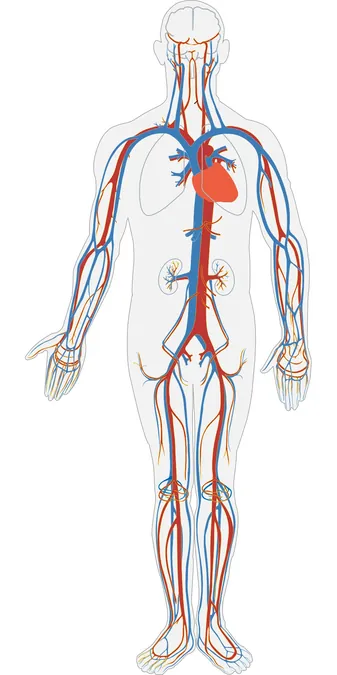
Revolutionary Breakthrough in Multiple Sclerosis Treatment: Insights from the Phase 3 PERSEUS Study
2025-05-29
Author: Emily
Unlocking the Future of MS Treatment
Exciting developments are emerging from the phase 3 PERSEUS trial, a double-blind, placebo-controlled study investigating the effectiveness of tolebrutinib, an innovative Bruton tyrosine kinase (BTK) inhibitor, aimed at transforming treatments for patients suffering from primary progressive multiple sclerosis (PPMS). Recently, at the 2025 Consortium of Multiple Sclerosis Centers (CMSC) Annual Meeting in Phoenix, Arizona, researchers unveiled crucial data about the baseline characteristics of the study participants, providing a clearer picture of the patient demographics involved.
Diversity in Demographics: Who Joined the Study?
The PERSEUS study, which encompasses a parallel-group, multicenter design, is currently enrolling 767 patients diagnosed with PPMS. A notable 54% of these participants are male, and a striking 83% identify as White. At the outset of the trial, the average Expanded Disability Status Scale (EDSS) score was 4.9, aligning well with the study's qualification criteria ranging from 2.0 to 6.5. Led by Dr. Robert J. Fox from the Cleveland Clinic's Mellen Center, the study revealed that, on average, participants had been experiencing symptoms for 7.7 years, with a PPMS diagnosis established 4.2 years prior.
Awaiting Game-Changing Results
As researchers eagerly anticipate the study results, focusing on the efficacy and safety of tolebrutinib, these findings are expected to be announced later this year. Participants in this groundbreaking trial are randomly assigned to either a regimen of tolebrutinib at 60 mg or a placebo, with the primary goal of delaying disability progression. Interestingly, about 59% of participants were treatment-naïve and a remarkable 89% had no gadolinium-enhancing lesions at baseline.
Tolebrutinib: The Future of Neuroprotection
Tolebrutinib is engineered to provide enhanced protection for the brain, effectively modulating immune activity both peripherally and centrally. Mirroring the actions of ibrutinib, it is designed as an irreversible covalent inhibitor of BTK, ensuring long-lasting suppression of BTK signaling, even as plasma levels decrease. This targeted approach aims to minimize off-target effects, potentially increasing safety and tolerability for patients.
A Broader Clinical Picture: Studies in Progress
The PERSEUS trial is just one piece of the puzzle in the broader clinical evaluation of tolebrutinib. Other prominent studies include the phase 3 HERCULES trial focusing on non-relapsing secondary progressive MS (nrSPMS), and the GEMINI series examining relapsing MS across two separate trials. Significantly, in March, the FDA accepted Sanofi’s submission for tolebrutinib as a treatment option for nrSPMS, marking a critical step with a PDUFA date set for September 28, 2025.
Groundbreaking Findings from HERCULES
Data from the HERCULES trial, involving 1,131 participants, demonstrated that tolebrutinib delayed the onset of confirmed disability progression by 31% compared to the placebo group. Additionally, the study indicated that participants had nearly double the rate of confirmed disability improvement when treated with tolebrutinib.
Potential for Greater Effectiveness
More recently, analyses revealed that tolebrutinib may particularly benefit patients with higher counts of paramagnetic rim lesions (PRLs). For those with at least four baseline PRLs, treatment led to a 54% reduction in the risk of disability progression, showcasing its potential effectiveness in specific patient populations. However, it's crucial to note that this data was not part of the FDA filing submissions.
Stay Tuned for Breaking Updates!
The medical community is on the edge of its seat, eagerly awaiting the upcoming results from the PERSEUS study and the potential implications for MS treatments. As further updates emerge from CMSC 2025, the future appears bright for advancing therapies for those living with multiple sclerosis.









 Brasil (PT)
Brasil (PT)
 Canada (EN)
Canada (EN)
 Chile (ES)
Chile (ES)
 Česko (CS)
Česko (CS)
 대한민국 (KO)
대한민국 (KO)
 España (ES)
España (ES)
 France (FR)
France (FR)
 Hong Kong (EN)
Hong Kong (EN)
 Italia (IT)
Italia (IT)
 日本 (JA)
日本 (JA)
 Magyarország (HU)
Magyarország (HU)
 Norge (NO)
Norge (NO)
 Polska (PL)
Polska (PL)
 Schweiz (DE)
Schweiz (DE)
 Singapore (EN)
Singapore (EN)
 Sverige (SV)
Sverige (SV)
 Suomi (FI)
Suomi (FI)
 Türkiye (TR)
Türkiye (TR)
 الإمارات العربية المتحدة (AR)
الإمارات العربية المتحدة (AR)